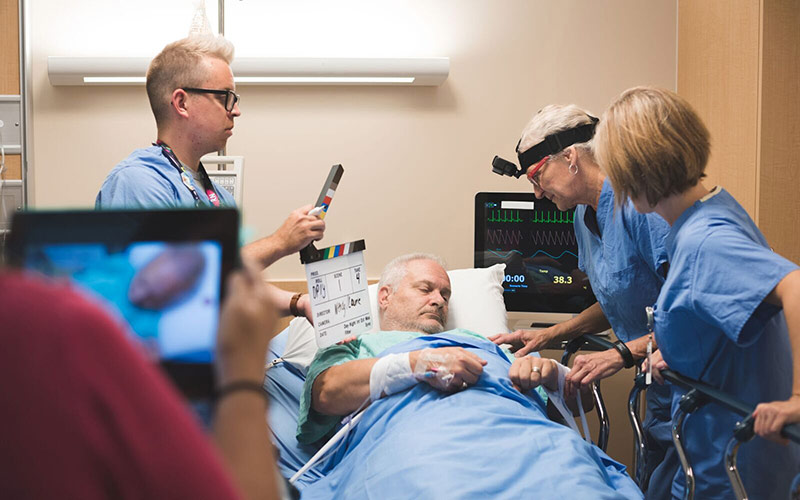Faculty of nursing virtual gaming simulation workshop being held at UNB
Author: UNB Newsroom
Posted on Jul 16, 2019
Category: UNB Fredericton

Approximately 20 nursing faculty members from all three sites of the University of New Brunswick (Saint John, Moncton and Fredericton), the Université de Moncton and staff from the Centre for Enhanced Teaching and Learning (CETL) will participate in a two-day interactive workshop, facilitated by the Canadian Alliance of Nurse Educators Using Simulation (CAN-Sim).
Led by CAN-Sim co-presidents, Dr. Marian Luctkar-Flude, assistant professor at Queen's University school of nursing and Dr. Jane Tyerman, assistant professor at the University of Ottawa school of nursing, faculty participants will learn how to develop Virtual Gaming Simulations (VGS) from concept to finished product. Once trained, faculty can independently create VGSs for use in their area of interest. A CETL priority-funding award supports the workshop, which will take place Wednesday, July 17 and Thursday, July 18 from 8:30 a.m. until 4:30 p.m., in MacLaggan Hall, Room 53.
Guided by the Canadian Association of Schools of Nursing’s recommended actions for nurses, faculty members will develop two integrated simulations that include learning objectives to address the opioid crisis in Canada. The first simulation will address acute care, concentrating on a client experiencing an overdose, while the second simulation focuses on community care, emphasizing health promotion and harm reduction.
“The intent of the workshop is to create capacity for faculty to develop virtual gaming simulations to use as a teaching tool as a form of simulation, which, in essence integrates the clinical environment with the learning environment,” says Renee Gordon, workshop organizer and senior instructor in the faculty of nursing at UNB’s Moncton site.
“VGSs provide an exciting approach to developing critical thinking and clinical judgment using an interactive electronic interface,” says Gordon. “Learners watch a video situation, which unfolds in real time and pauses at pre-selected decision points. They then pick from a series of options and watch their actions play out as the scenario progresses. The learner receives immediate feedback by observing the outcomes of their decision for both correct and incorrect actions at each decision point,” she says.
Gordon adds that this innovative teaching and learning modality can be utilized in classroom, laboratory and clinical contexts. “While the use of this modality has been identified in the literature as an effective teaching and learning tool to improve clinical judgment, VGSs remain relatively new within Canadian nursing education and this innovation is continuing to evolve,” she says.
Media contact: Angie Deveau
Photo credit: CAN-Sim
